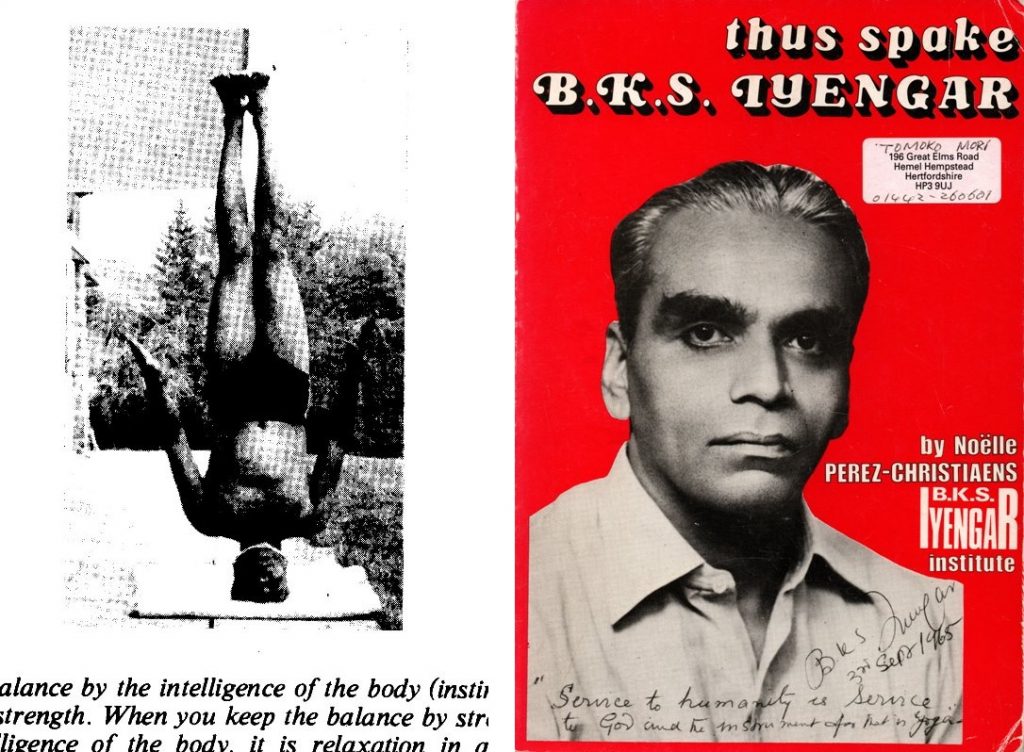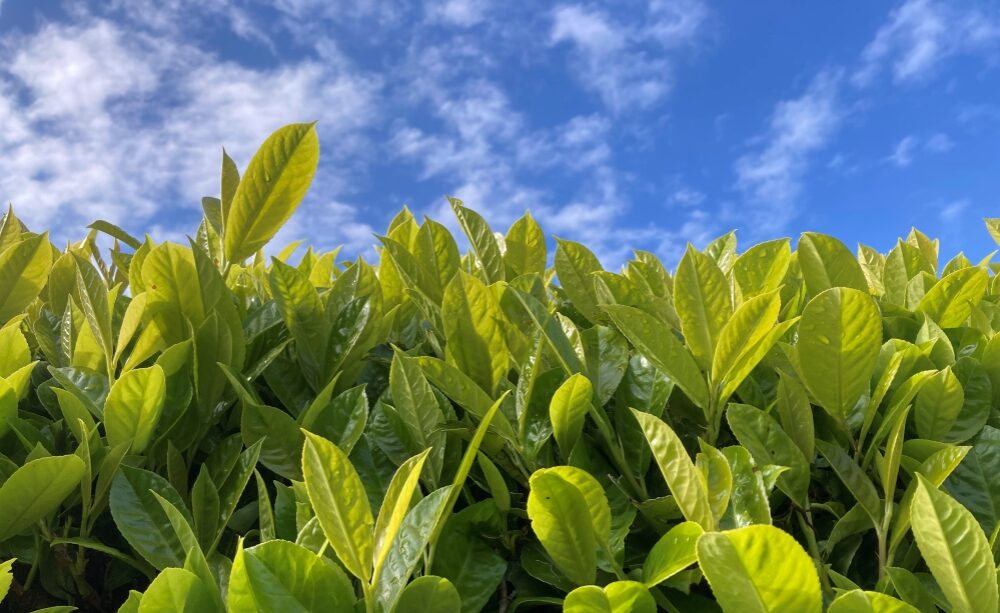Approaching from the vertical central axis
Many similar videos can be found on Youtube, but I just want you to look at this one below introduced in a course I attended – ‘Bones For Life’ founded by Ruthy Alon. Looking at this video, I would like to express some thoughts about Hara and the natural body, which can be approached from awareness of the body’s central axis.
According to internet research, a person carries a load up to 20% of their own body weight in this manner. Moving around with such a load on top of the head without hand-support, we have to rely on the body’s instinctive balance along our vertical central axis.
Here is another extreme example of using the body’s vertical central axis: Mr. Iyengar is posing on the crown of his head. This is from a book titled ‘thus spake B.K.S.Iyegar’ written by Noëlle Perez-christiaens, and the comment says : you must keep the balance by the intelligence of the body (instinct, balance feeling or ability) not by strength. When you keep the balance by strength, it is physical action, when by intelligence of the body, it is relaxation in action.

In Okido Yoga, the words ‘Natural Body’, ‘Hara’ and ‘Tanden’ are commonly used. People who attend Okido Yoga classes all over the world may come across unique dynamic movements as shown in the book ‘KYOKA-HO’. However, to me personally, such continuous dynamic movements do not fit very much to cultivating my awareness of the ‘Hara’ location.
So like in this video, I have started using a head cushion for practice of awareness, putting it on top of my head with or without a small extra load, and moving up and down or around the house while I do some simple house work. Then I feel that, when I try to hold such loads at my highest point, my muscles work as those arrows in the image below are converging from all directions toward one point. Also, to keep working in such a state, I must try to relax other parts of my body. ‘The body’s forces converge to the very one point Hara or Tanden and other parts are relaxed.’ That’s the sate of Natural Body.
It is almost impossible to grasp the exact sensation where Hara is, but when I practise this, I feel getting closer to it. Cultivating such an inner feeling is an important training for yoga students.

More essential Hara-training
The Japanese word ‘Hara’ implies more than physical or physiological meaning. It implies a meaning of spiritually developed character through disciplines. So, another type of Hara-strengthening training is to sincerely face our daily life matters, and try to solve them step by step until they are solved, calling forth patience and determination when daunted by pressure, and thus allow our duty mind (or temptation to escape) to gradually shift to love to all people around us, and perhaps even beyond them, to Life itself.
How to make a head cushion
If you want to try improving your awareness of the central axis and Hara, here is how to make a head cushion.
First, make three paper patterns A, B and C as below. As indicated, evenly mark 6 points on A, 2 points on B, and 4 points on C.

Then, please follow the numbered photos below:
1.To make the inner bag, cut out two pieces of A from white cotton cloth. Sew the right sides together with fine stitches, leaving some opening to put the filling later. Sew the edge for reinforcement.
2.At each of the 6 marked points, sew about 2.5 cm as the photo shows so that the flat surface becomes 3-dimensional.
3.Having sewn all 6 points, it will look like this.
4.Turn inside out.
5.Fill this inner bag with 250 grams of linseeds, and sew up the opening with fine stitches.
6.Stitch the centre as the photo shows.
7.This is the completed inner cushion.
8.To make the outer bag, cut out one each of A, B and C from the cloth you choose for the outer bag. Double-fold the straight part of B and sew. Do the same for C. Put A with right side up, and on top, put C with right side down to line up to A, and then B with right side down so that B and C evenly overlap as well as perfectly line up to A. Pin them. Then sew as you made the inner bag without leaving any opening. Sewing about 2 mm outside the marked circle will make a good outer bag to easily install the inner cushion. Do as you did 2-4 for the inner bag. When you have done up to this stage, it will look like 8.
9. This is how it looks from the other side.
10.Turn inside out.
11.Put the inner cushion into the out bag.
12.Completed !! You can wash the outer bag as necessary.


Thank you so much for taking the time to blog. It helps me return to my time with my teacher Takao Nakasawa Melbourne Australia. I’m bringing all you do into my awareness. Thank you
Thank you for your comment. Takao and I shared a training period in Mishima Dojo under Oki-sensei. We were sent out abroad about the same time. It was just after the largest international seminar ‘Life Encounter’ in spring 1984.
Recently I was listening to a report from Africa, Lesotho I think, where women were queuing to collect water. The impressive part was that they were then carrying 20 litre containers on their heads. If you try to carry that much by hand it’s very hard work – I know!
Thank you very much for sharing. I have practised with a cushion and I felt that while walking I am more aware of my toes and the position of my arms is more backwards, upper chest more open. And it is as if I move more elegantly. I am happy with your blogs.
Thank you for your comment, Lucia. This walking brings happy and light feelings, doesn’t it? I wish more people come to enjoy walking like this.